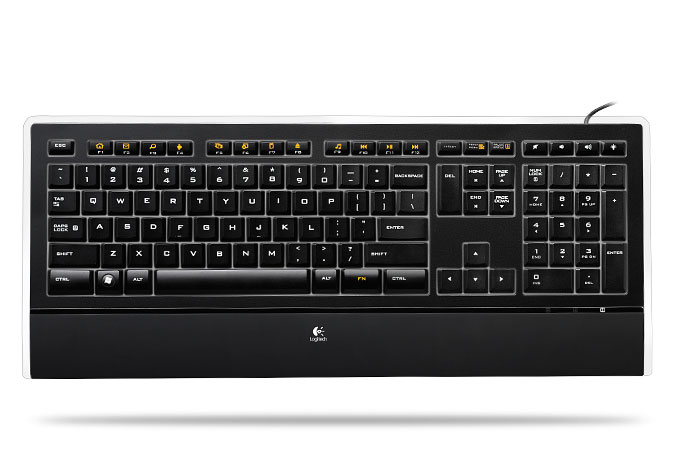Joel Spolsky seems to like controversy, although I can see why.
Being a contrarian
ideologue is pretty sweet.
Some people have been suggesting that the
Joel Test
should mention "100% unit test coverage" as well. Personally, I
think that's a great idea. The industry is evolving, and automated
testing is getting into the suite of tools that every competent programmer
should be familiar with.
Joel
disagrees, since
100% coverage is "a bit
too doctrinaire about something you
may not need".
For what it's worth, I don't
completely disagree with Joel.
Some of the software that I work on doesn't have 100% test coverage, and
that's okay. I wrote it before I learned about unit testing.
I'm not freaking out and spending all of my time just writing tests
for old code which apparently works.
However, we do have
policies
in place to
add test coverage whenever we change anything.
Those policies stipulate that 100% coverage is a requirement for any
new or
changed code, so I consider myself a fan of 100%
coverage and I generally think it's a good idea. I do think it
belongs on the Joel Test, or at least something like it.
I feel like my opinions are representative of a pretty substantial number
of "agile" practitioners out there, so I'd just like to respond to a few
points:
Joel mentions "SOLID principles", as if they're somehow equivalent to unit
testing. As if the sentiment that leads one to consider 100% test
coverage a great idea leads one into a slavish architectural death-spiral,
where any amount of "principles" are dogma if they have a sticker that
says "agile" stuck to them.
Let me be clear. I think that
SOLID, at least as Joel's defined it, is pointlessly
restrictive. (I've never heard about it before.) As a guy who
spends a lot of time implementing complex
state
machines to parse protocols, I find "a class should have only one
reason to change" a gallingly naive fantasy. Most of the things that
Joel says about SOLID are true, especially if you're using a programming
language that forces you to declare types all over the place for
everything. (In Python, you get the "open" part of "OCP", and the
"clients aren't forced" part of "ISP" for free.) It does sound, in
many ways, like the opposite of "agile".
So, since SOLID and unit testing are completely unrelated, I think we can
abandon that part of the argument. I can't think of anyone I know
who likes unit testing would demand slavish adherence to those
principles. I agree that it sounds like it came from "somebody that
has not written a lot of code, frankly".
On the other hand, Joel's opinion about unit tests sounds like it comes
from someone who has not written a lot of tests, frankly.
He goes on and on about how the
real measure of quality is whether
your code is providing value to customers, and
sure you can use
unit tests if that's
working for you, but hey, your code
probably works anyway.
It's a pretty weaselly argument, and I think he knew it, because he kept
saying how he was going to get flamed. Well, Mr. Spolsky, here at
least
that prediction has come true ;-).
It's weaselly because
any rule on the Joel Test could be subjected
to this sort of false equivalence. For example, let's apply one of
his arguments against "100%" unit testing to apply to something that is
already on the joel test, version control:
But the real problem with version control as I've
discovered is that the type of changes that you tend to make as code
evolves tend to sometimes cause conflicts. Sometimes
you will make a change to your code that, causes a conflict with
someone else's changes. Intentionally. Because you've changed
the design of something... you've moved a menu, and now any
other developer's changes that relied on that menu being
there... the menu is now elsewhere. And so all those
files now conflict. And you have to be
able to go in and resolve all those conflicts to
reflect the new reality of the code.
This sounds really silly to anyone who has really used version control for
any length of time. Sure, sometimes you can get conflicts. The
whole point of a version control system is that you have
tools
to resolve those conflicts, to record your changes, and so on.
The same applies to unit tests. You get failures, but you have
tools to deal with the failures. Sure, sometimes you get test
failures that you knew about in advance.
Great! Now,
instead of having a vague intuition about what code you've broken
intentionally, you actually have some empirical
evidence that
you've only broken a certain portion of your test suite. And sure,
now you have to delete some old tests and write some new tests. But,
uh... aren't you deleting your old code, and writing some new code?
If you're so concerned about throwing away tests, why aren't you
concerned about throwing away the code that the tests are testing?
The reason you don't want to shoot for 90% test coverage is the same
reason you don't want to shoot for putting 90% of your code into version
control or automating 90% of your build process into one step or putting
90% or (etc) is that you
don't know where the bugs are going to
crop up in your code. After all, if we knew where the bugs were, why
would we write any tests at all? We'd just go to where the bugs are
and get rid of them!
If you test 90% of your code, inevitably, the bugs will be in the 10% that
you didn't test. If you automate 90% of your build, inevitably the
remaining non-automated 10% will cause the most problems. Let's say
getting the optimization options right on one particular C file is really
hard. Wouldn't it be easier to just copy the .o file over from bob's
machine every time you need to link the whole system, rather than encoding
those options in some kind of big fancy build process, that you'd just
have to maintain, and maybe change later?
Joel goes on to make the argument that, if he were writing some software
that "really needed" to be bulletproof, he'd write lots of integration
tests that exercised the entire system at once to prove that it produced
valid output. That is a valid testing strategy, but it sort of
misses the point of "unit" tests.
The point of unit tests — although I'll have to write more on this later,
since it's a large and subtle topic — is to verify that your components
work as expected
before you integrate them. This is because
it's easier to spot bugs the sooner you find them: the same argument Joel
makes for
writing
specs. And in fact if you read Mr. Spolsky's argument for
writing specs, it can
very easily be converted into an argument for
unit testing:
Why won't people write unit tests? People like
Joel Spolksy claim that it's because they're saving time by
skipping the test-writing phase. They act as if
test-writing was a luxury reserved for NASA space
shuttle engineers, or people who work for giant, established insurance
companies. Balderdash. ... They write bad code and produce shoddy
software, and they threaten their projects by taking giant risks which
are completely uncalled for.
You think your simple little function that just splits a URL into four
parts is super simple and doesn't need tests because it's never going to
have bugs that mysteriously interact with other parts of the system,
causing you a week of debugging headaches?
WRONG. Do you think
it was a coincidence that I could find a link to the
exact code
that Joel mentions? No, it's not, because
any component
common enough to make someone think that it's so simple that it couldn't
possibly have bugs in it, is also common enough that there are a zillion
implementations of it with a zillion bugs to match.
Unlike specs, which just let you find bugs earlier, tests also help you
make finding (and fixing) a bug
later be cheaper.
Watching a test-driven developer work can be pretty boring. We write
a test. We watch it fail. We make it pass. We check it
in. Then we write another test. After a while of watching
this, a manager will get itchy and say, Jeez! Why can't you just go
faster! Stop writing all these darn tests already! Just write
the code! We have a deadline!
The thing that the manager hasn't noticed here is that every ten cycles or
so, something different happens. We write a test. It succeeds.
Wait, what? Oops! Looks like the system didn't behave
like we expected! Or, the test is failing at a weird way, before it
gets to the point where we
expect it to fail. At this point,
we have just taken five minutes to write a test which has saved us four
hours of debugging time. If you accept my estimate, that's 10 tests
× 5 minutes, which is almost an hour, to save 4 hours. Of course
it's not always four hours; sometimes it's a minute, sometimes it's a
week.
If you're not paying attention, this was just a little blip. The
test failed twice, rather than once. So what? It's not like
you wouldn't have caught that error
eventually anyway!
Of course, nobody's perfect, so sometimes we make a mistake anyway and it
slips through to production, and we need to diagnose and fix it later.
The big difference is that, if we have 100% test coverage, we
already have a very good idea of where the bug
isn't. And,
when we start to track it down, we have a huge library of test utilities
that we can use to produce different system configurations. A test
harness gives us a way to iterate extremely rapidly to create a test that
fails, rather than spinning up the whole giant system and entering a bunch
of user input for every attempt at a fix.
This is the reason you don't just write giant integration tests first.
If you've got a test that just tells you "COMPILE FAILED", you don't
know anything useful yet. You don't know which component is broken,
and you don't know why. Individual unit tests with individual
failures mean that you know what has gone wrong. Individual tests
also mean that you know that each component works individually
before inserting it into your giant complex integrated compiler, so
that if it dies you have a consistent object that you know at least
performs some operations correctly, which you can inspect and almost
always see in a sane
internal state, even if it's not what the rest
of the system expects.
Giant integration test suites can be hugely helpful on some projects, but
they are the things which are sometimes unnecessary gold plating
unless you have a clear specification for the entire system. Unit
tests are the bedrock of any automated testing strategy; you need to start
there.
Unit tests
seem like they take time, because you look at the time
spent on a project and you see the time you spent writing the tests, and
you think, "why don't I just take that part out?". Then your
schedule magically gets shorter on paper and everything looks rosy.
You can do that to anything. Take your build automation out of your
schedule! Take your version-control server out of your budget!
Don't write a spec, just start coding! The fact is, we pay for
these tools in money and time because they all pay off
very
quickly.
For the most part, if you don't apply them consistently and completely,
their benefits can quickly evaporate while leaving their costs in place.
Again, you can try this incomplete application with anything.
Automate the build, but only the compile, not the installer.
Use version control, but make uncommitted hand-crafted changes to
your releases after exporting them. Ignore your spec, and don't
update it.
So put "100% test coverage" on your personal copy of the Joel Test.
You'll be glad you did.
One postscript I feel obliged to add here: like any tool, unit
tests can be used well and used poorly. Just like you can write bad,
hard-to-maintain code, you can write bad, hard-to-maintain tests.
Doing it well and getting the maximum benefit for the minimum cost
is a subtle art. Of course, getting the most out of your version
control system or written spec is also a balancing act, but unit tests are
a bit trickier than most of these areas, and it requires skill to get good
at them. It's definitely worth acquiring that skill, but the
learning is not free. The one place that unit tests can take up more
time than they save is when you need to learn some new subtlety of how to
write them properly. If your developers are even halfway decent,
though, this learning period will be shorter than you think.
Training and pair-programming with advanced test driven
developers can help accelerate the process, too. So, I stand by what
I said above, but
there is no silver bullet.








